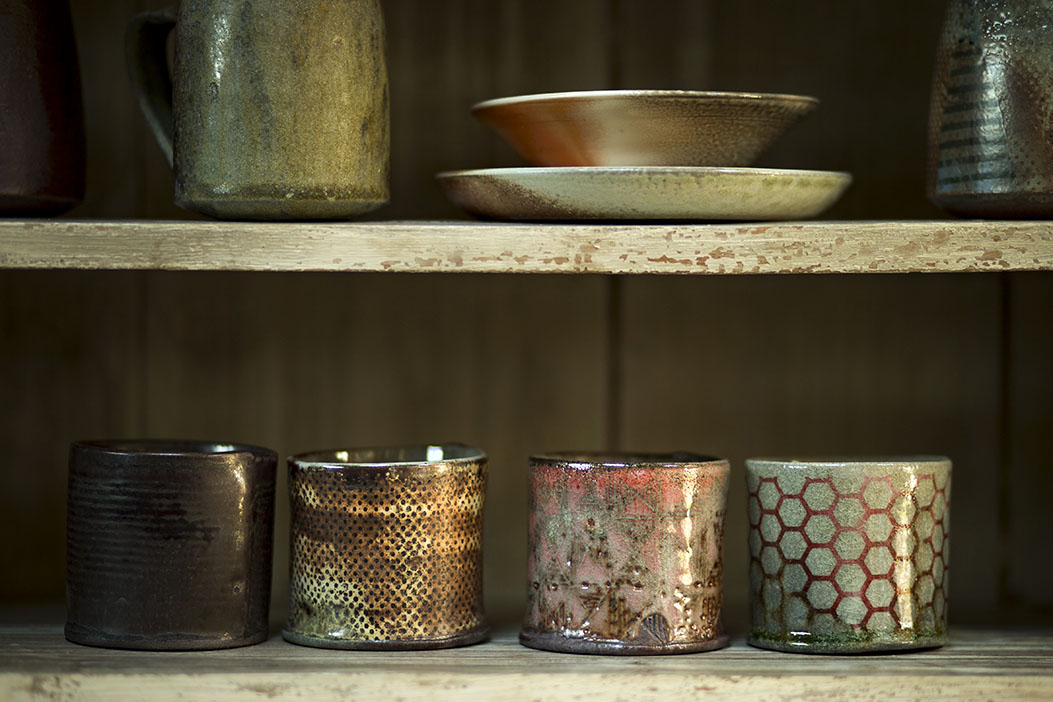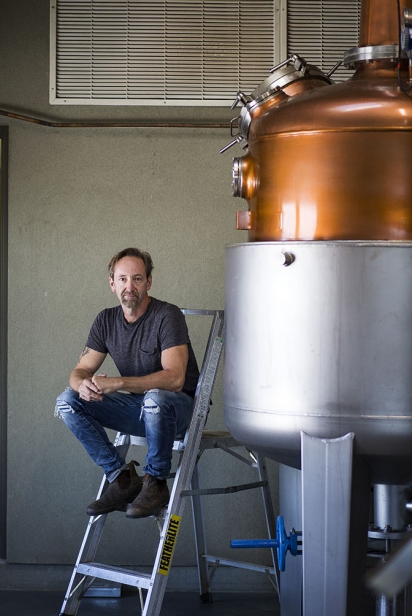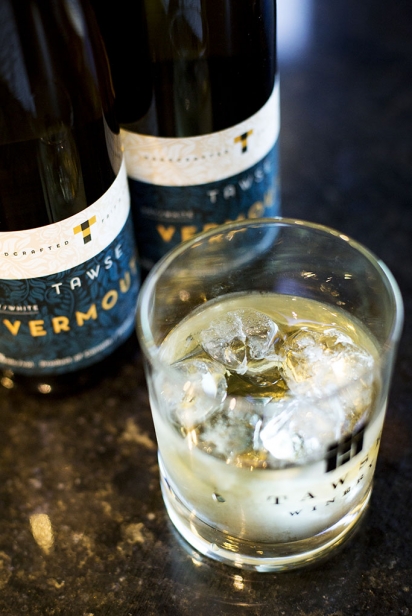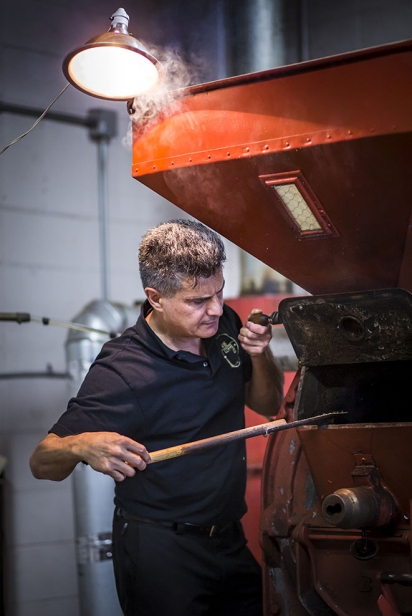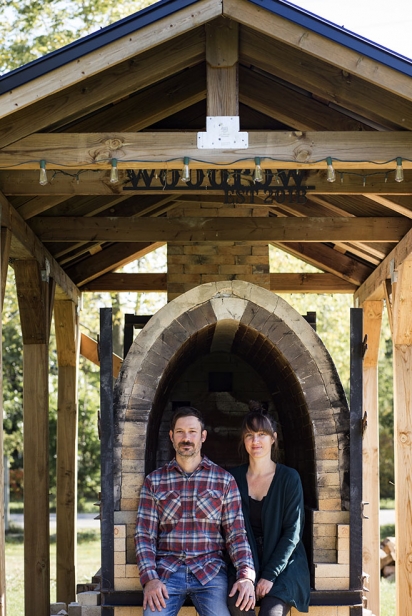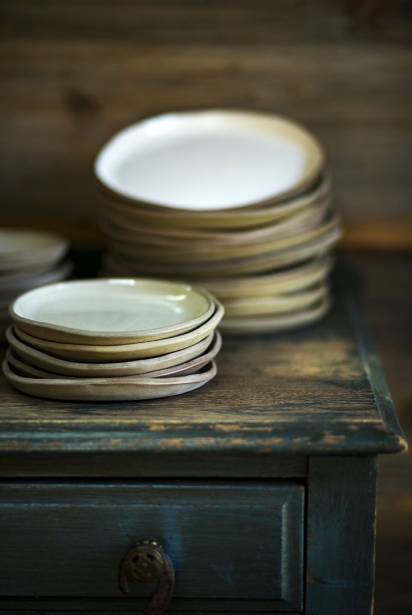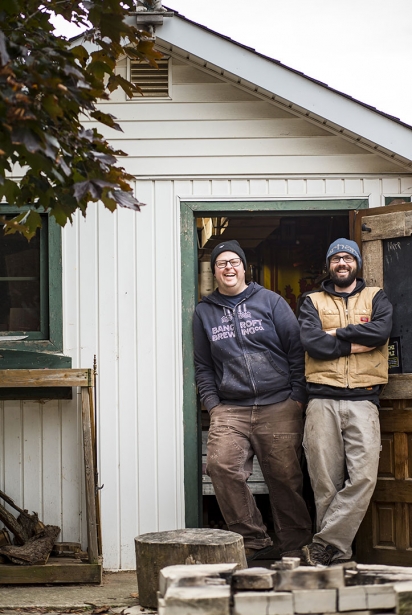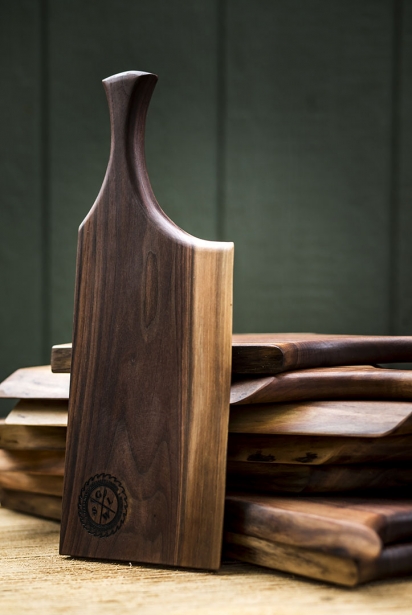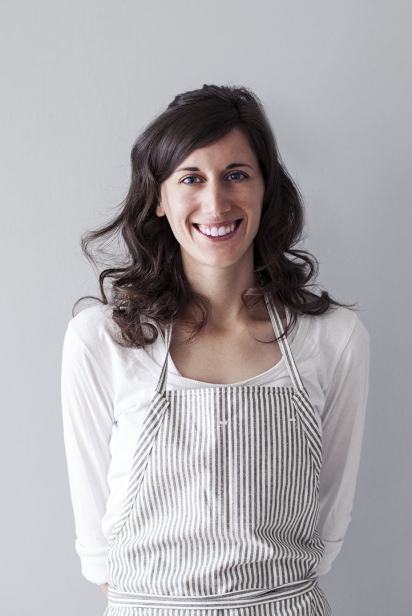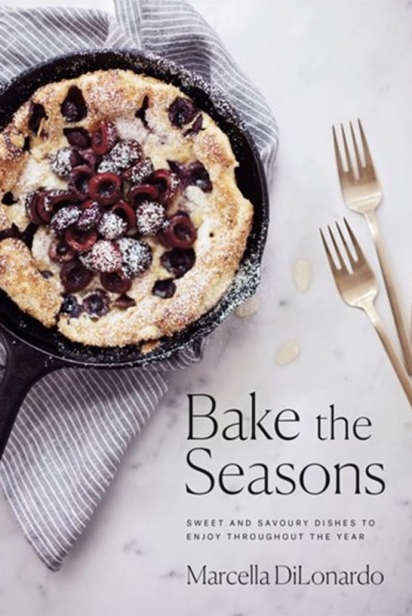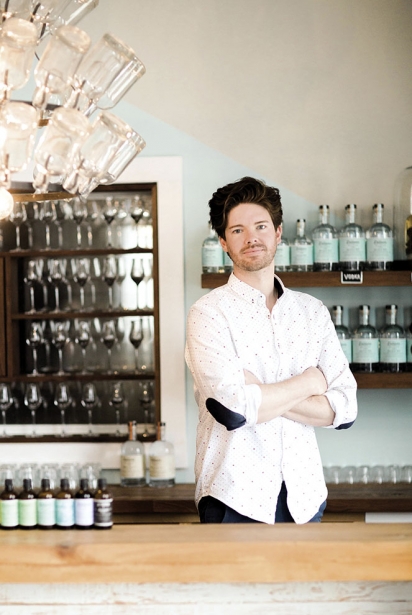Making a Niagara List
It's not the North Pole, but as Ontario's "banana belt," Niagara is home to artisans that, at this time of year, aren't unlike you- know-who's elves working their magic to make edibles and inedibles that will be appreciated long after the wrapping paper is recycled.
From craft spirits turning waste from the wine-making process into something infinitely sippable and stoneware that's as singular as the meals served upon it, to cookbooks that are a joy to read and work from, the region known for wine and waterfalls could easily be deemed a one-stop holiday shop — with better views and unparalleled offerings.
For the thirsty tippler
It was a trip to France that put Paul Pender in the spirit to try something new. The vintner at Tawse Winery and his boss, Moray Tawse, were travelling in Burgundy for professional development when they came upon a distiller who fermented grape skins leftover from wine-making to make Marc de Bourgogne. Think of it as France's take on grappa, a grape pomace brandy typically sipped after dinner to relax and settle the stomach.
Organic and biodynamic were already part of Tawse Winery's modus operandi . Finding a palate-pleasing use for its wine-making remnants fits the Beamsville winery's earth-friendly approach to producing tipple.
"Every wine region does a lot of distilling with wine byproducts," Pender says. "It just makes sense."
The same couldn't be said for provincial regulations for distilling at the time. Until 2015, distillers were required to maintain a minimum production of 5,000 litres — a tall order for a place whose primary focus was making wine.
The winery applied for a distilling licence as soon as the province relaxed those rules, and last September, Tawse released its first trio of grappa-inspired spirits, borne of residual Pinot Noir, Gewürztraminer and Riesling skins in the winery's 1,000-litre still. Called La Pressatura, they're available in 25 select LCBO stores and online.
The wine-based digestifs are a little more "pure, a little more fresh than a traditional grappa would be," Pender says. "I'm not a fan of Gewürztraminer wine to start, but it's a pure distillate. It's very perfumed and you think it's going to be sweet, but there's no sugar."
A gin made with Ontario corn and botanicals followed the La Pressatura trio last spring and Pender's favourite of the Tawse spirits lineup — a vermouth derived from a Riesling base rooted in Tawse's certified organic and biodynamic Limestone Ridge Vineyard.
"It's delicious and tasty and a lot of fun to drink on its own or on the rocks," he says of the vermouth.
The summer saw the release of a vodka made from a mix of rye, grapes and apple, the latter also starring in a calvados resting in barrels at the moment. Whisky is also in waiting at the winery, to be released a few years from now.
"It's a lot of fun. Some things in distilling are immediate, which is fun, whereas, with grapes and wine, there's always waiting."
Pender also has his sights set on distilling a liqueur with Niagara fruit — including a regional spin on a spirit's stalwart. "It's such a beautiful area for fruit — maybe something like a Grand Marnier, but instead of oranges, it's something with peaches," Pender says. "I have lots of ideas in hand and I would like to do something with local fruit. It's a nice tie-in to what we do."
tawsewinery.ca
For the caffeine connoisseur
Yonge Street can't claim "the longest street in the world" as its bragging right anymore, but the iconic artery dividing Toronto between east and west can at least boast about having a coffee named after it.
It was a given that Christopher Battagli and his father, Carmine, would craft a Yonge Street blend when, in 2015, they launched their 416 Coffee Co., ironically located in St. Catharines, a city of of 905 ilk. What Yonge Street lacked in length to be a world record holder, the father and son duo made up for with an easy-drinking, smooth and balanced roast that lingers on the palate. It's every person's coffee, including those new to drinking specialty java.
"We had to have a coffee with long-lasting flavour, a good morning coffee and a nod to the city," Battagli says. "Everyone knows Yonge Street, and it's in the middle of the city, so it was a nod to that."
There's a Yonge Street in St. Catharines, too, its rank among long streets unknown. But with an outline of the CN Tower on its packages and the city's area code as its moniker, 416 Coffee Co. deliberately channels the big city. It's branding that honours Carmine's foray in the coffee world beginning on College Street, and Toronto's Little Italy neighbourhood, where he started drinking espresso in pool halls and cafés and living the inspiration for what would become 416 Coffee Co.'s College Street espresso blend.
The College Street beans come from five different origins, Christopher explained, but unlike espresso "they're not extremely dark or over-roasted. It's a mix of old and new."
Carmine would go on to further his coffee education by spending time in Italy during his youth. He returned to Toronto and began working with a cousin fixing espresso machines. By 1998, he ventured out on his own, acquiring a roaster that went out of business for the cost of back rent to the landlord.
The investment brought with it a 40-year-old, two-batch roasting machine, a piece of equipment that today pushes $250,000 to buy new. Carmine called his venture Robust Coffee House.
Meanwhile, he was making a home and having a family in St. Catharines. He continued running Robust in Toronto until 2000 when commuter traffic drove him to hang his shingle in the Garden City instead.
He started roasting single-origin beans before the term became part of the caffeinated crowd's lexicon, selling them under his new Caffe Opera label. But the economic disaster that was 2008 and unpaid invoices from Carmine's American customers would silence operations.
Fast-forward seven years, and Christopher, now a marketing student at Brock University, was discovering — and enjoying — the nuances of coffee. Single-origin, fair-trade, and direct-trade were becoming hot commodities, and the idea of dusting off that old two-batch roaster began to percolate.
416 Coffee Co., the progeny of the 905, was born. The Battaglis knocked on doors to convince restaurants, including Kravingz in Port Credit and Dispatch in St. Catharines, to brew their beans. They put up a website for online orders — free-shipping when you spend $50 or more — and sourced ethically produced and traceable beans from Costa Rica, Tanzania, Papua New Guinea and other far-flung places.
Last July, they opened a shop in Port Dalhousie, where they brew takeaway cups and sell sacks of single-origin coffees, alongside those flagship Yonge Street and College Street blends.
416-coffee.com
For the fired-up foodie
Sit down to a meal at some of Niagara's most inspired dining rooms, and you'll see the work of Johann Munro. Ditto if you crack the spine of St. Catharines chef Adam Hynam-Smith's Curbside cookbook while looking for meal inspiration.
Munro isn't a chef. Nor is she a food stylist. Instead, she makes her mark in Niagara's culinary community as a potter, one whose spare plates, functional bowls and stoneware with "a modern country vibe" made at her Shed Pottery studio in the Garden City frame lunch, dinner and dessert in countless kitchens and make it a highly Instagrammable affair.
Munro started throwing clay professionally in 2014 after holding senior management posts in fine dining. Until then, pottery had been a hobby inspired by her grandmother, who worked with clay as a diversion.
But Munro turned it into a bona fide side hustle when she started taking classes and applied to be a vendor at local art and craft shows. Eventually, it became her full-time job description, borne of necessity when she was laid off from her management gig.
"I had some pots, so I threw an open sign on the deck (of my home) and I put the pots out," Munro recalls.
Enter Hynam-Smith, then co-piloting a gourmet food truck with his partner Tamara Jensen. Hynam-Smith was writing a book filled with his globally inspired street food recipes and needed plates as unique as his cooking for the photos that would complement his how-tos.
Soon after Curbside was published, other chefs came knocking for Munro's beautifully sedate esthetic.
But that kind of mass production took its toll physically and creatively on Munro. Still, it made Shed Pottery a household name among collectors of the finer things in life, and business exploded. In 2017, Munro's partner, Ryan Byng, whose geology background has been as beneficial to making pottery as any fine arts degree, joined her in helping to sustain and grow the Shed brand. He hand-builds plates and cups alongside her and helps with glaze development. Together they make pieces — individual one-offs, and entire collections — that they would have in their own home.
They use two firing methods — electric-fired and a more intensive wood-fired — to take their wares from wet clay to functional items. The former is entirely programmable and controllable; its results mostly reliable and predictable for both the bisque and glazing cycles.
The wood-firing method, which sets Shed Pottery apart from others working with clay, requires six weeks of steady production to fill the kiln, and firings fuelled by coal beds reaching more than 1,000C. It takes between 20 and 24 hours to complete each cycle and produces pottery marked by flames, a glaze much like glass, and an unpredictable yet stunning result every time.
"As the fire gets going, you're stoking it every five to seven minutes, adding several logs at a time. It's very labour-intensive," Munro explains. "It's not something you can walk away from."
Much like the pieces she and Byng create.
"When you get nice pots out of it, it's more than the sum of its parts," Byng said about the wood-fired process. "It's not magic, but it's more than you envisioned."
shedpotterybyjohann.com
For the love of wood
It all started with a wine barrel and Bill Wilkie’s desire to make something. Tea light holders carved from the staves of the spent barrel seemed like a no brainer. Wilkie had seen others do it with great success. So the Niagara Falls man, who didn’t grow up whittling wood as a hobby or go to trades school for carpentry, tried his hand at it with borrowed tools and the guidance of his father-in-law, who had some woodworking experience.
And then “it kind of exploded,” Wilkie says of Good Wood Specialty Lumber, which he operates with his business partner Mike Cornies.
Good Wood launched in 2016 with those tea-light stands, and has since expanded to include charcuterie and serving boards, honey dippers, cheese knives and other custom kitchenware.
Those first candle holders sold quickly, Wilkie recalled, and the money he made went back into building Good Wood.
Wilkie and Cornies bought tools, and sourced salvaged lumber, including black walnut, the “gold standard” for charcuterie boards, cherry and maple. They worked evenings and weekends to turn Good Wood into a great business out of Wilkie’s backyard shed.
“It’s always been that desire to create something,” Wilkie said about getting into woodworking. “When you make something it means so much more.”
The proof is in the following Good Wood has developed for its one-of-a-kind products. “It's charcuterie-board season,” Wilkie says. “This is when everyone wants charcuterie boards. They’re the primary focus right now.” Commercial clients clamour for Good Wood’s live-edge charcuterie boards, while individuals put in custom orders for more personalized items — both of which are ideal for holiday gatherings and gift giving.
Good Wood charcuterie boards, which combine functionality and the beauty of black walnut’s rich, dark grain, are available in Niagara at Della Terra Fresh Olive Oils and Balsamic Tasting Bar in St. Catharines and Niagara Falls and Your Farm Gate Butcher Shop and Catering in Ridgeway. Honey dippers can be scooped up, fittingly at Rosewood Estate Winery in Beamsville — famous for its wildflower honey and mead.
Wilkie and Cornies also ship orders, which they take over Facebook and Instagram (@goodwoodniagara). Plans are to add cutting boards to their offerings in the new year. The duo also takes custom furniture orders and sells lumber to other woodworkers.
And they continue to invest their earnings into making Good Wood the best it can be. “It’s been growing from our profits,” Wilkie says. “It’s kind of neat how we built it up to where it is now.”
facebook.com/goodwoodniagara
For the book-loving bon vivant
It's been a banner year for Niagara food writers with four cookbooks hitting the shelves in 2019. The ink started spilling last spring with Marcella DiLonardo's ode to turning on the oven at any time of year in Bake the Seasons: Sweet and Savoury Dishes to Enjoy Throughout the Year.
The blogger behind Hey Modest Marce penned more than 100 recipes that honour each of the four seasons' bounty in approachable, but beautiful ways, while she motivates readers to crank the oven, even in the high heat of summer, for comfy cherry clafoutis or zucchini-cheddar bread.
Local authors had the most to say this fall, though, with the release of three volumes in close succession, starting with Michael Olson's Living High Off the Hog: Over 100 Recipes and Techniques to Cook Pork Perfectly.
One of the pioneers of Niagara Wine Country Cuisine, the former Inn on the Twenty chef who earned his chops as a saucier, channels his knack for cooking meat into an essential porcine primer.
Don't expect a chef-like tone or complicated recipes. Living High Off the Hog is very much about doing things within one's means. Olson is all about being practical, creating unfussy meals with pork cast in a starring role. They're dishes he wants home cooks to feel comfortable preparing and proud to share.
The book has four chapters, each one dedicated to a major group of cuts. Each section has the aim of encouraging home cooks to stray from their usual loin chops or back ribs and try something new such as a Ukrainian treasure chest — a tenderloin stuffed with perogies, onion and bacon, or char siu pork capicola.
The results can be washed down with a highball from Craft Cocktails: Seasonally Inspired Drinks and Snacks from Our Sipping Room. Written by Geoff Dillon of Dillon's Small Batch Distillers fame and his hospitality manager Whitney Rorison, the book tells the story of the region's first craft distiller, based in Beamsville, while offering 100 recipes for quick and easy, seasonally driven cocktails. There are a handful of recipes for snacks to enjoy alongside a red wine sour or apricot fizz, including a roasted beet and lemon hummus that incorporates lemon bitters, or grown-up gourmet popcorn, two ways (cilantro-lime or lemon, Parmesan and black peppercorn).
It's the ideal companion for the home barkeep charged with keeping the drinks flowing through the holiday season, or for someone looking for a quieter celebration that still requires raising a glass or two.
The final title is the debut release from Pardon Your French blogger Audrey Le Goff. The Brittany-born French food champion, who now hails from Niagara-on-the-Lake, shows the comforting side of French food in Rustic French Cooking Made Easy.
Le Goff demystifies French cooking as haute cuisine and demonstrates it as the domain of the home cook with chapters offering small bites for l'apéro — the easy-going French gathering focused on finger foods and cocktails — starters and casual fare, family meals, homey desserts and treats to make le goûter as popular a custom on this side of the Atlantic.
Stretching beyond stereotypical croissants and foie gras, Le Goff channels inspiration from Brittany to Basque Country, the Alps to Alsace and proves "the heart of French cooking is in home kitchens and not fancy restaurants.”


